smartbuildingmag.com
05
'23
Written on Modified on
MEDIAWORLD
Energy Saving in Smart Buildings
Milton D'Silva explains How smart technologies can make buildings energy efficient and sustainable.
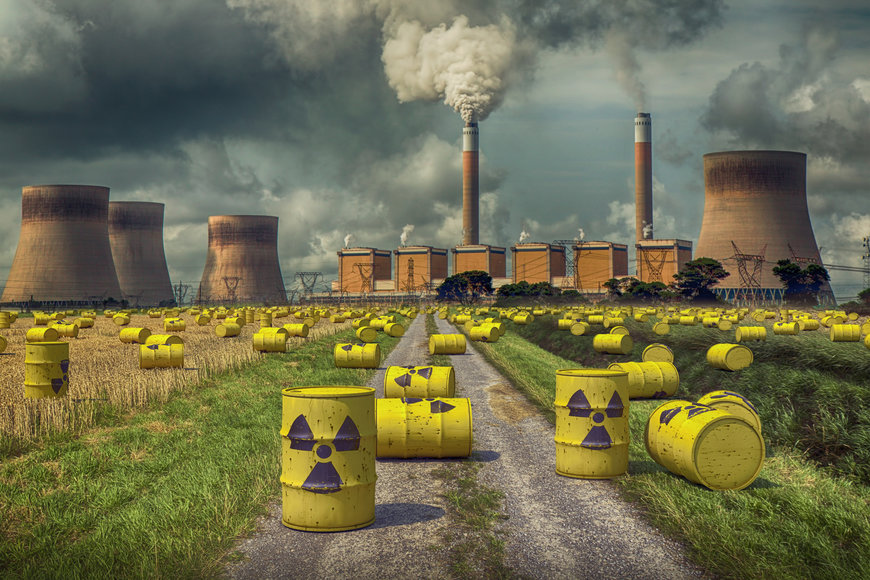
The year 2021 witnessed the tightening of energy markets as the global economy rebounded as the threats posed by the Covid pandemic began receding. By early 2022, the Russia-Ukraine conflict led to a full blown energy crisis. “Today, the world is in the midst of the first truly global energy crisis, with impacts that will be felt for years to come. Russia’s unprovoked invasion of Ukraine in February has had far reaching impacts on the global energy system, disrupting supply and demand patterns and fracturing long‐standing trading relationships,” said Dr Fatih Birol, Executive Director, International Energy Agency, in his Foreword to the World Energy Outlook 2022 released in October 2022. The IEA works with a broad range of international organisations and forums to ensure secure, affordable and sustainable energy systems.
The world is in the grip of a serious energy crisis even as it is striving to clean up the energy ecosystem by decarbonising electricity with renewable energy in order to combat climate change with net zero commitments. One way of dealing with this crisis is making less use of energy. But when energy consumption is widely considered as a mark of prosperity, any reduction in the use of energy is likely to affect the progress of the country or community. So what is the way out from this conundrum? There is indeed a practical solution that can mitigate some of the problems associated with the energy crisis the world is facing today – energy conservation or saving energy with some eminently doable actions, without impacting the creature comforts the world has grown accustomed to. A dollar saved is a dollar earned. A study done by the American Council for an Energy-Efficient Economy (ACEEE) states that just by monitoring and automating three things – HVAC systems, lighting and window shading – can result in energy savings of 30-50%.
Consider this – globally, buildings account for about 40% of final energy consumption. According to the IEA, energy use in buildings increased from 115 EJ in 2010 to almost 135 EJ in 2021, representing 30% of global final energy consumption. EJ is a unit used to state large scale energy use and 1 EJ is equal to 1018 joules. The IEA report further mentions that if the final energy use associated with the production of cement, steel and aluminium is considered, the share increases to 34%.
According to EIA, the US Energy Information Administration, energy consumption by the US residential sector and the commercial sector represents the majority of energy consumption in or on all US buildings. The residential and commercial sectors accounted for about 22% and 18% respectively – 40% combined – of total US energy consumption in 2022.
The situation is no different in the European Union, where collectively, buildings are responsible for 40% of energy consumption and 36% of greenhouse gas emissions, which mainly stem from construction, usage, renovation and demolition. The European Green Deal in fact envisages improving energy efficiency in buildings as the key in achieving the ambitious goal of carbon-neutrality by 2050.
Even a developing country like India has similar figures; buildings consume 37% of India’s total annual primary energy. With the country right now experiencing a major shift towards urbanisation, this percentage is only going to increase and the government is concerned enough to initiate various measures to frame robust policies and standards for constructing sustainable green buildings.
With energy demand from buildings and construction rising in both developed and developing countries, concerns over climate change are leading to demands for effective energy efficiency measures amidst the rapid growth in urbanisation in the developing countries. At the core of this quest for energy efficiency is the Paris Agreement, which is a legally binding international treaty on climate change. It was adopted by 196 Parties at the UN Climate Change Conference (COP21) in Paris, France, on 12 December 2015. For the first time, a binding agreement brings all nations together to combat climate change and adapt to its effects, mandating the signatory countries to place a renewed emphasis on the need to accelerate the smart energy transition.
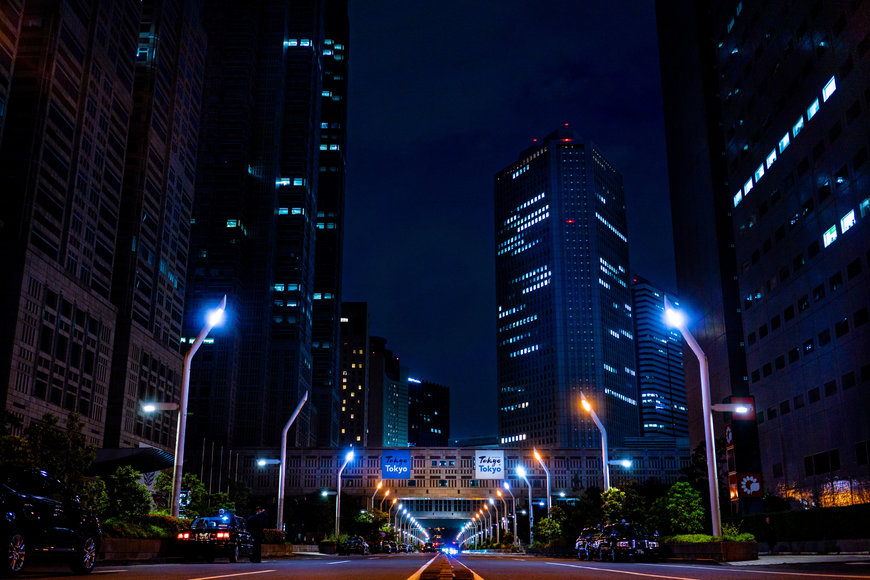
Buildings account for about 40% of final energy consumption. Photo by Takashi Watanabe on Unsplash
The Building Envelope
One of the most important factors with a major impact on energy efficiency of a building – residential, industrial or commercial – is the building envelope. The building envelope is the physical barrier between the exterior and the interior of the building, which separates the internal conditioned space from the external environment, to ensure the comfort of those inside. It includes things like walls, roofs or ceilings, doors and windows, and even the foundation of the buildings and ventilation shafts, chimneys, etc., things that have a direct bearing on the efficacy of the building envelope.
The building envelope is not a recent construct – it has evolved with human beings from their cave dwelling days; and not just human beings but the animal kingdom as well. From using naturally formed caves for protection against the elements – heat, cold and rain – to crafting primitive huts by making use of grass and stones and other materials available in nature, human ingenuity has always been at work improvising the building envelope! The igloos built by the Arctic dwellers or grass huts of various African tribes are fine examples. These were the most comfortable dwellings built by people inhabiting them in the given circumstances, making use of materials found abundantly in the respective environs. As with many other human problems, the trouble began with the growing human population and the mindless development that followed. What made matters worse is the scant disregard to the environmental degradation caused by human actions, which in turn has precipitated the climate crisis.
According to InterNACHI, the world’s leading association for home inspectors, historic buildings are often more energy-efficient than modern construction. An article* on the InterNACHI website mentions that studies have shown buildings constructed before 1940 require less energy for heating and cooling than houses built during the subsequent 35 years. Houses were built to protect occupants from the elements rather than rely on electric lights and heaters. At the same time, it is also true that most old buildings characterised by high ceilings, big windows and large rooms are energy guzzlers. The reason is not hard to fathom – when they were built, concepts like energy efficiency and sustainability were not in vogue. Today, these buildings with poor insulation and large interiors consume far more energy for heating or cooling. In fact, it is easier to build new buildings that are energy efficient rather than modify old buildings to use less energy. The InterNACHI article highlights the features that make some historic buildings energy efficient while underscoring the problems that make retrofitting many such buildings for energy efficiency tricky.
Presently, it is possible for buildings to be energy efficient based on contemporary knowledge and available resources, backed by existing technologies. Located in Dubai, UAE, the Burj Khalifa is the tallest building in the world, a marvel of engineering and architectural prowess. Completed in 2008 and formally inaugurated in 2010, it is also a highly energy efficient building designed to minimise the carbon footprint. The building is enveloped in a high performance external cladding system and two-paned windows. The outside pane reflects solar heat and the inside pane, coated with a thin layer of silver, keeps infra-red rays out. The 828-metre tall structure stands on a foundation that is 120 metre deep and tapers as it rises, providing stability by reducing the effect of the wind. The building makes optimum use of natural ventilation, which reduces energy consumption. But that is not all. Apart from being energy efficient in the conventional sense, Burj Khalifa is also a fine example of a smart building. Way back in 2016, Honeywell – the company engaged in the project – had named it as the smartest building in the UAE.

Grass huts are fine example of a building envelope. Image by Freepik
The Smart Way to Energy Efficiency
Better design and construction materials, effective insulation, efficient lighting and optimised HVAC can certainly make buildings save energy, but for real and incremental gains, buildings need to be intelligent and smart. The effort thus has to be two-pronged – first exploit the full potential of energy efficiency gains by conventional measures, and next, adopt smart building solutions to further the gains. In the process it is also possible to factor the renewable sources of energy pursuant to the goal of decarbonisation and digitalisation of electricity. While the Building Automation System (BAS), also known as Building Management System (BMS) has been around for decades, it is the combination of BAS/BMS with the Internet of Things (IoT) that has enabled connecting various devices and systems, creating a seamless network that can be accessed and controlled remotely. IoT plays an important role in improving efficiency, reducing costs, and enhancing building operations. This is enabled by various types of sensors used for diverse applications such as: climate control, including temperature, humidity, vibration, etc; electricity usage; lighting control; fire detection and suppression; occupancy sensors; security and access control; water monitoring and predictive maintenance, among others. The various parameters and conditions are monitored in real time and corrective actions initiated through computer consoles and mobile devices.
“Smart Building solutions create a huge impact on reduction in electricity consumed by building systems such as HVAC, lighting, etc; they can bring about 10-20% reduction in overall electricity consumption which decreases the carbon emissions by the same proportion,” said Suruchi Dhingra, Research Manager, Transforma Insights, referring to a report she authored in 2022. Transforma Insights is a research firm focused on the world of Digital Transformation (DX). It is led by seasoned analysts who provide advice, recommendations and tools for organisations seeking to understand how new technologies will change the markets in which they operate. The 2022 report, ‘Sustainability Enabled by Digital Transformation’, analyses the sustainability and wider ESG impact of use cases that harness IoT, Artificial Intelligence, Machine Learning, Edge Computing and a range of other emerging technologies, based on extensive analysis of real-world deployments. Smart Buildings is one of the 12 focus areas of the report.
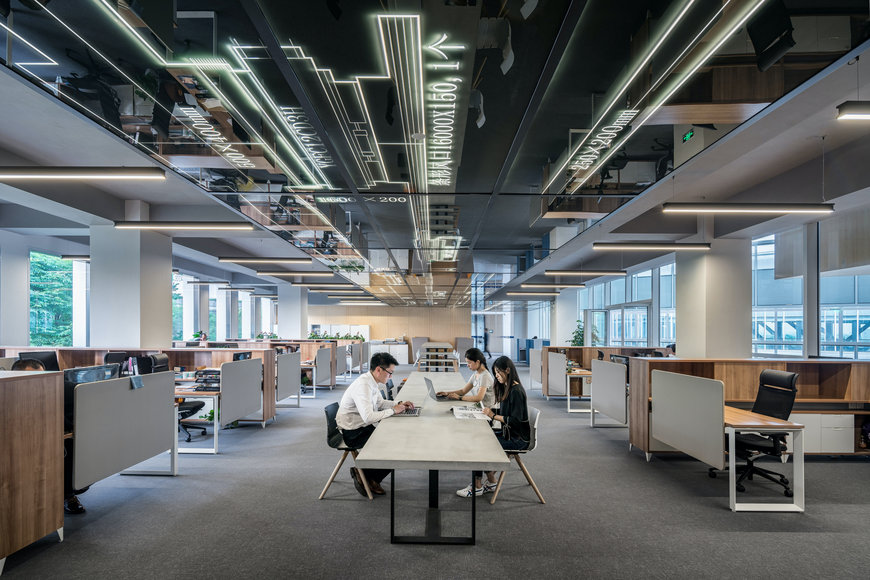
Making optimum use of natural light. Photo by LYCS Architecture on Unsplash
Lighting is the second biggest consumer of electricity globally, and the second biggest opportunity for energy savings through digital transformation. Smart lighting controls together with motion detection sensors and daylight adjustments can save up to 35-40% of electricity compared to traditional lighting. The Transforma Insights report mentions how a facilities management company saved 50% of electricity by switching to LEDs and an additional 69% by deploying smart lighting controls. 20-25% of electricity consumed by HVAC systems can be saved by using AI and IoT to control and monitor HVAC. Building Automation Systems (BAS) integrated with HVAC and lighting can save an additional 1-3%. According to the IEA, digitalisation of buildings (including smart thermostats, controllers and smart lighting) could cut total energy use in residential and commercial buildings between 2017 and 2040 by as much as 10%.
According to a recent report of Grand View Research, Inc., the global smart building market size is expected to reach USD 570.02 billion by 2030, registering a CAGR of 26.8% from 2023 to 2030. The report states that governments worldwide are making significant investments in smart city initiatives, propelling the adoption of smart buildings in different regions. For example, the Energy Conservation Building Code (ECBC) promoted by the Indian government has established minimal energy performance requirements for structures, covering the building exterior and heating, cooling, and air conditioning. Developed by the Bureau of Energy Efficiency (BEE) – a statutory body under the Ministry of Power – the ECBC recommends a minimum level for efficient use of energy. It sets a minimum building envelope performance standard to limit heat gains/loss and ensure adequate natural ventilation and daylighting. To improve energy efficiency of domestic, commercial and industrial appliances and energy consuming equipment, BEE has implemented the Standards & Labelling (S&L) programme. The standards ensure that the worst performing products are removed from the market, while labels encourage consumers to purchase increasingly more efficient products.
The European Commission has promoted the Smart Readiness Indicator (SRI), a common EU scheme for rating the readiness of buildings to use smart technologies. The SRI will help raise awareness of the benefits smart building technologies bring for creating healthy, energy-efficient and comfortable buildings, via building automation and electronic monitoring of heating, hot water, ventilation and lightning. As noted at the beginning, buildings are the single largest energy consumer in the EU, and account for more than a third of its greenhouse gas emissions. A refurbished and modernised building stock is therefore crucial for achieving the EU’s energy and climate goals, and the SRI plays a key role in it by encouraging technological innovation and creating an incentive for integrating cutting-edge smart technologies in buildings.
In the US, the Smart Building Acceleration Act 2019 was introduced in the 116th session of the Congress, but it did not receive a vote. It must be mentioned that in the US, even when a bill fails to be enacted into a law, its provisions are often included in other bills. The bill assists the building sector in adopting smart building technology that increases energy efficiency. Specifically, the bill requires the Department of Energy (DOE) to establish a Federal Smart Building Program. But much before green became fashionable, the US Green Building Council had devised the LEED® standards certification program in 1994 to encourage sustainable practices in buildings. LEED (Leadership in Energy and Environmental Design) is the most widely used green building rating system in the world. Available for virtually all building types, LEED provides a framework for healthy, efficient, and cost-saving green buildings. LEED certification is a globally recognised symbol of sustainability achievement and leadership.
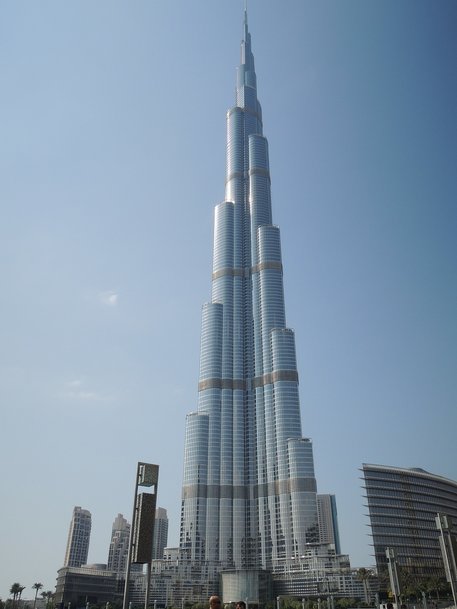
Burj Khalifa is a fine example of a smart building. Photo by Jolyne D from Pixabay
Smart building solutions – major players
Effective building management with tools of modern technology, brought together on a single platform and networked through a seamless communication system, is essential for safe, secure and highly energy efficient building. No wonder, the leading players in this segment are all traditional automation majors. Honeywell International Inc., INTEL Corporation, Siemens, ABB, Johnson Controls, Bosch, LG Electronics Inc., Schneider Electric SE, IBM, among several others, are present in this space with a myriad of offerings. A select few are profiled briefly in the following paragraphs.
ABB
As a leading automation player, ABB Ltd, located in Zürich, Switzerland, needs no introduction. The company offers an innovative portfolio that provides the flexibility in designing and implementing building solutions that adapt easily to individual needs. Analyze – Control – Optimize. That is how ABB’s Commercial Buildings Digital Portfolio supports end-to-end sustainability journeys through digital smart solutions that deliver cost, energy, time savings and increased comfort. Based on ABB Ability™ technology, the company works with clients to create workplaces with intelligent and automatic lighting, air-conditioning, heating and movement detection, to offer greater energy efficiency and increased security. With digital solutions everything can be controlled remotely, giving users complete control wherever they are, whenever they need it most.
Honeywell
Connected and intelligent building systems are Honeywell’s forte. It is the data from these intelligent connections that enables smart building management. The company’s Building Energy Management System (BEMS) builds on this by offering a frictionless occupant experience and powerful insights into the building’s usage. The data collected through BEMS can be displayed via user-friendly dashboards and visuals, integrating multiple systems and sensors within one BEMS and access to business-critical data. Through these insights, one can make the building more efficient, reducing costs, preventing unplanned downtime, improving the tenant experience and becoming more sustainable. That is the Honeywell definition of a smart building.
Johnson Controls
At Johnson Controls, data-enabled digital solutions bring greater value to owners, customers, and occupants by creating more intelligent, connected buildings. Johnson Controls Digital Solutions create smarter, more intelligent, connected buildings by implementing emerging technologies like artificial intelligence and machine learning. Operational technology (OT) and information technology (IT) convergence is driving disruption in how facilities and enterprises operate. Building owners, managers and tenants have to rethink how they interact with buildings. Re-imagining how to better utilise buildings and improve occupant experiences means digitally transforming an environment to more effectively use the data that buildings generate to drive comfort, security and sustainability.
Mitsubishi Electric
With ‘making the invisible visible’ as its catchphrase, Mitsubishi Electric’s innovative building management system (BMS) allows clients to centrally manage and monitor their buildings and ensure seamless operations. The softwares are easily scalable and customisable, so that they can help with customised visualisation and control multiple buildings at diverse locations. Mitsubishi Electric BMS Solutions help in optimising the management of a multitude of systems – from air conditioning, chillers and ventilation, to lighting, elevators, security and fire alarms. They can leverage trend reports and analysis capabilities to get insights on the dynamics, efficiencies, and conditions of building operations. The solutions can connect with systems from different manufacturers, including lighting systems, air conditioners, elevators, and fire alarms.
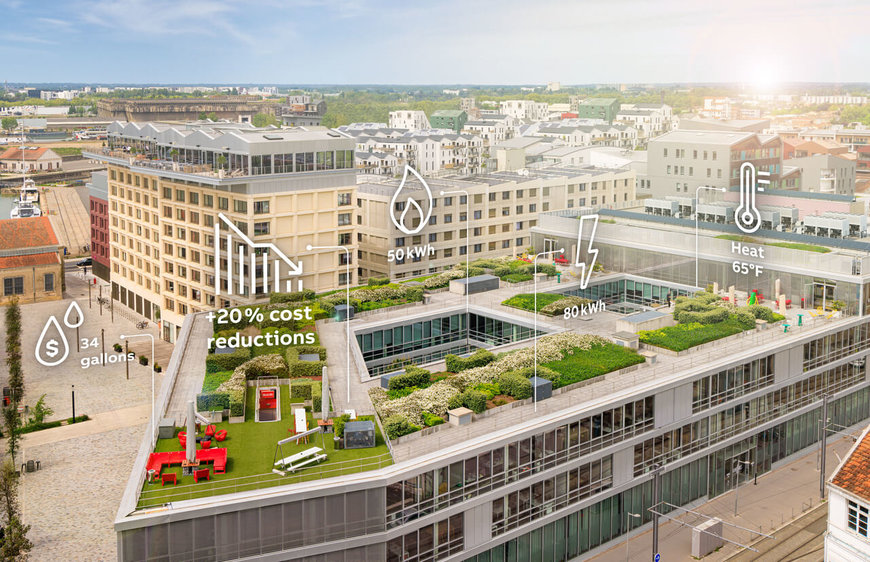
Tracking buildings data and utilities with ABB Ability™ Building Analyzer. Image: ABB
Schneider Electric
Schneider Electric leverages the EcoStruxure Building platform to enable economical and efficient use of assets and resources while creating a comfortable and safe environment for all the occupants. It uses a broad range of tools, devices, and technologies that offer several benefits like increased productivity, reduced energy consumption, enhanced security, and more. The collaborative Internet of Things (IoT) solution features a scalable, secure and global architecture to make buildings of all types smart. EcoStruxure Building securely connects hardware, software and services over an Ethernet IP backbone to help users maximise building efficiency, optimise comfort and productivity and increase building value.
Siemens
Siemens believes buildings are at the heart of human lives as they spend up to 90% of their time in them. With increasing demand for digitalisation, decarbonisation and decentralisation, there is a need for more user-centric, adaptable and sustainable buildings and infrastructures. With the Siemens Xcelerator for buildings portfolio and ecosystem of its partners, the company harnesses the power of data and technology to enable users to accelerate their digital transformation and deliver user-centric, adaptable and sustainable buildings and infrastructure. Siemens has a complete portfolio of smart building technologies, applications and services which starts with harnessing the right data from the building, its occupants and their surroundings to deliver a smart building that is: comfortable & safe; energy & asset efficient; space & user efficient; and energy intelligent & resilient.
Conclusion
In a recent report, ‘Real Estate Predictions 2022 – The future of smart buildings’, Deloitte offers a few market insights on how to match expectations between occupiers and owners. The report cites a 2020 Outlook that had indicated 75% affirmative results by real estate executives who anticipated that smart buildings would become the norm within five years. The report notes how, despite an increasing number of smart building lighthouse projects, this expectation has not been fulfilled. Finally, it states 5 main barriers for smart buildings: No common smart building understanding and unclear user requirements; lacking expertise (internal & external) and smart building market transparency due to fast changing technologies; no general return on investment/business case; lack of 360-degree perspective (including all relevant stakeholder and value pool partners); and high complexity during implementation and operations.
Going forward, the entire stakeholders – vendors, owners, occupiers and policy makers – have to deal with these issues and arrive at a median solution that takes care of the barriers mentioned above, addressing them to the satisfaction of all.
References
1. https://www.iea.org/reports/world-energy-outlook-2022
2. https://commission.europa.eu/news/focus-energy-efficiency-buildings-2020-02-17_en#
3. https://www.nachi.org/energy-efficiency-historic-buildings.htm
4. https://transformainsights.com/blog/smart-buildings-reduce-global-energy#
5. https://www2.deloitte.com/content/dam/Deloitte/lu/Documents/realestate/lu-real-estate-predictions-the-future-of-smart-buildings.pdf

